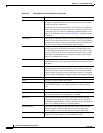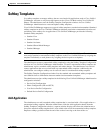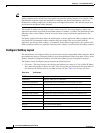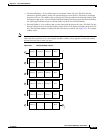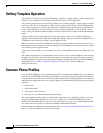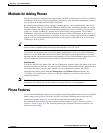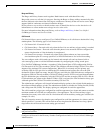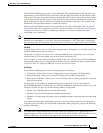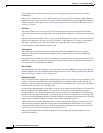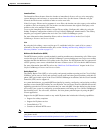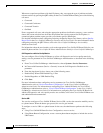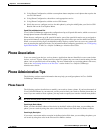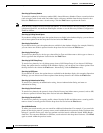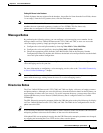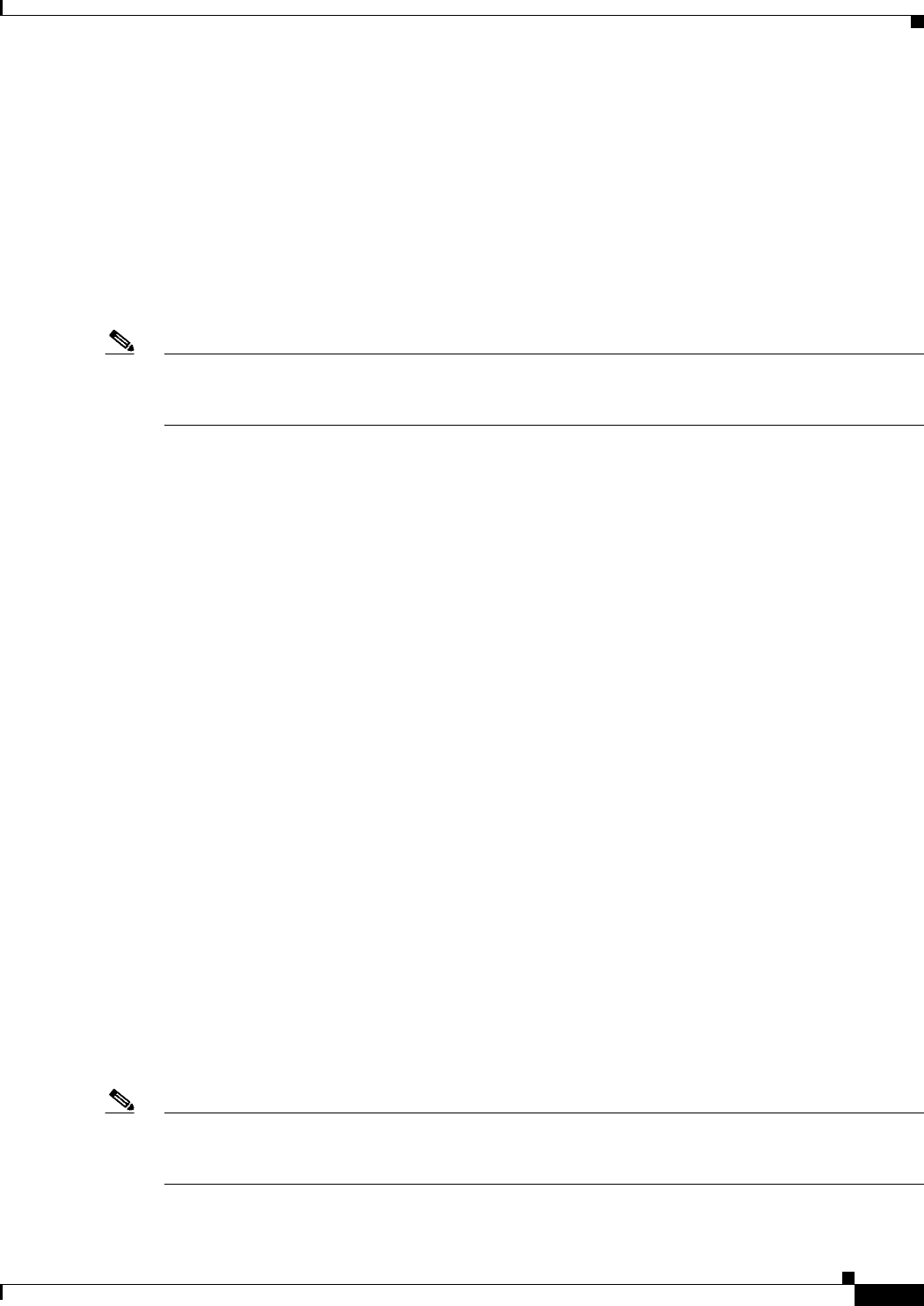
43-23
Cisco Unified CallManager System Guide
OL-14153-01
Chapter 43 Cisco Unified IP Phones
Phone Features
Cisco Unified CallManager provides a service parameter (CFA Destination Override) that allows the
administrator to override Call Forward All (CFA) when the target of the CFA calls the initiator of the
CFA, so the CFA target can reach the initiator for important calls. In other words, when the user to whom
calls are being forwarded (the target) calls the user whose calls are being forwarded (the initiator), the
phone of the initiator rings instead of the call being forwarded back to the target. The override works
whether the CFA target phone number is internal or external.
When the CFA Destination Override service parameter is set to False (the default value), no override
occurs. Ensure the service parameter is set to True for CFA override to work. See Service Parameters
Configuration in the Cisco Unified CallManager Administration Guide for information about
configuring service parameters.
Note CFA override only takes place if the CFA destination matches the calling party and the CFA Destination
Override service parameter is set to True. If the service parameter is set to True and the calling party
does not match the CFA destination, CFA override does not take place, and the CFA remains in effect.
Call Park
Call park allows a user to place a call on hold, so anyone who is configured to use call park on the Cisco
Unified CallManager system can retrieve it.
For example, if a user is on an active call at extension 1000, the user can park the call to a call park
extension such as 1234, and another user can dial 1234 to retrieve the call.
To use call park, you must add the call park extension (in this case, 1234) in Cisco Unified CallManager
Administration when you are configuring phone features. For more information about call park, refer to
Call Park in the Cisco Unified CallManager Features and Services Guide.
Call Pickup
Cisco Unified CallManager provides the following types of call pickup:
• Call pickup—Allows you to answer a ringing phone in your designated call pickup group.
• Group call pickup—Allows you to answer incoming calls in another pickup group.
• Other group call pickup—Allows you to answer incoming calls in a pickup group that is associated
with your own group.
All three types of call pickup can operate automatically or manually. If the service parameter,
AutoCallPickupEnabled, is enabled, the Cisco Unified CallManager automatically connects you to the
incoming call after you press one of the following softkeys on the phone:
• Pickup—For call pickup (calls in your own pickup group)
• GPickup—For group call pickup (calls in another pickup group)
• OPickup—For other group call pickup (calls in a pickup group that is associated with your own pickup
group)
After the call pickup feature is automated, you need to use only one keystroke for a call connection
except for group call pickup. You dial the DN of that other pickup group after you press the GPickup
softkey on the phone.
Note CTI applications support monitoring of the party whose call is picked up. CTI applications do not
support monitoring of the pickup requester or the destination of the call that is picked up. Hence, Cisco
Unified CallManager Assistant does not support auto call pickup (one-touch call pickup).




